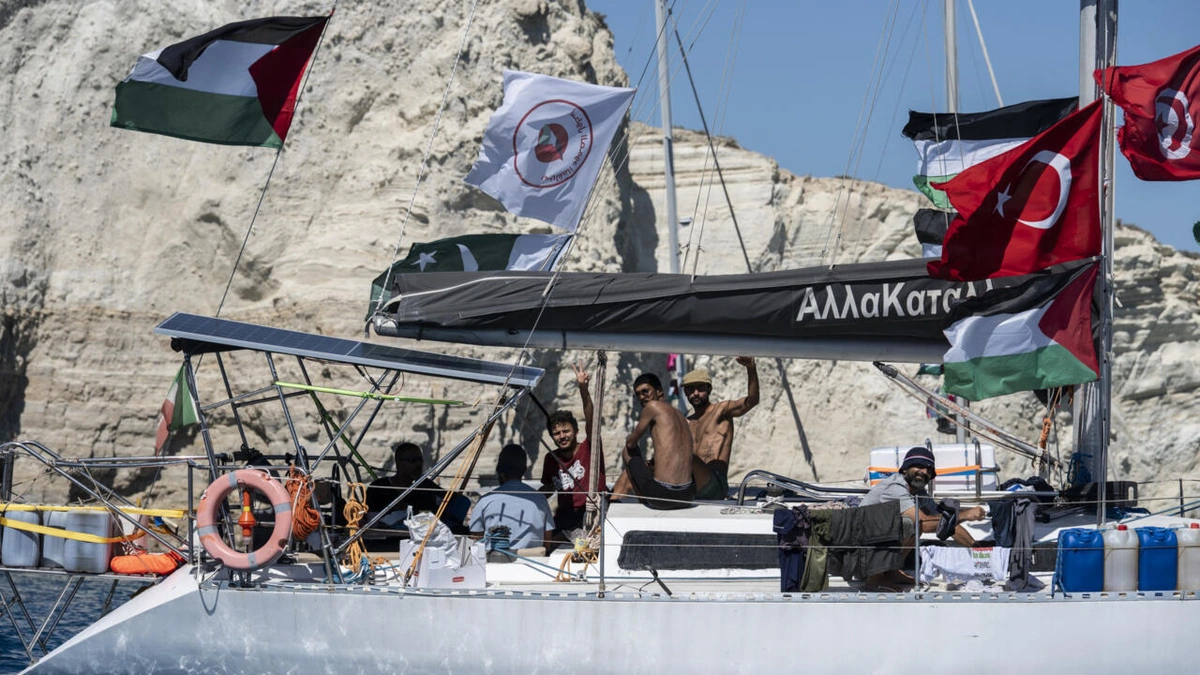The Gaza Flotilla . The name alone conjures images of activism, conflict, and a deep-seated struggle for human rights. But let’s be honest, unless you’ve been following Middle Eastern politics closely for years, you might only have a vague idea of what it was all about. So, what fascinates me is not just the event itself, but the why behind it – why it happened, why it still resonates, and what it tells us about the complexities of the Israeli-Palestinian conflict.
Understanding the Context: The Gaza Blockade

To understand the flotilla, you first need to grasp the context: the Gaza blockade . Since 2007, following Hamas’s takeover of the Gaza Strip, Israel (with Egypt’s cooperation) has imposed a land, air, and sea blockade. Israel maintains this is necessary for security reasons, preventing weapons and materials for terrorist activities from entering Gaza. Palestinians, on the other hand, argue it’s a collective punishment that has crippled Gaza’s economy and created a humanitarian crisis. According to various international organizations, the blockade has severely restricted the movement of people and goods, leading to shortages of essential supplies, high unemployment, and widespread poverty. Human Rights Watch and other organizations have documented the impact of these restrictions.
The 2010 Flotilla | A Collision Course
Enter the Gaza Freedom Flotilla . Organized by a coalition of pro-Palestinian activists, its aim was to break the Israeli naval blockade and deliver humanitarian aid directly to Gaza. The 2010 flotilla, carrying hundreds of activists from around the world, including the MV Mavi Marmara, became the most infamous. What initially began as a peaceful attempt to deliver aid turned violent when Israeli forces intercepted the ships in international waters.
Here’s the thing: accounts of what happened next differ dramatically. Israel claims its soldiers were attacked upon boarding the Mavi Marmara and acted in self-defense. Activists claim the soldiers opened fire without provocation. The result? Ten activists were killed, and many more were injured on both sides. A UN report later found that Israel used excessive force, while also noting evidence of resistance from some activists.
The Aftermath and Lasting Impact
The flotilla incident sparked international outrage and condemnation. It put a spotlight on the Gaza blockade and the humanitarian situation in the Gaza Strip like never before. But, and this is a big but, it also deepened the divide. Israel defended its actions, arguing it had the right to protect its borders. The incident further strained relations between Israel and Turkey, which had been improving in previous years. I initially thought this was a one-off event, a tragic anomaly. But the repercussions continue to be felt today.The incident is a landmark event in the Israel-Palestine conflict . It spurred countless debates and initiatives focused on delivering aid to Gaza.
Why It Still Matters | More Than Just Aid
So, why does the Gaza flotilla matter in 2024? It’s not just about the aid itself. It’s about several things: the right to challenge a blockade, the question of proportionality in the use of force, and the ongoing struggle to find a just and lasting solution to the Israeli-Palestinian conflict. The blockade continues to this day (with some easing of restrictions), and the living conditions in Gaza remain dire. I’ve seen arguments online suggesting the flotilla achieved nothing. I disagree, it keeps the conversation alive.
The flotilla serves as a potent symbol. It reminds us that the world is watching, that people care, and that the status quo in Gaza is unsustainable. The international scrutiny resulting from the incident put pressure on Israel to ease some restrictions on the entry of goods, though critics argue these measures are insufficient.
The Future of Gaza | Finding a Path Forward
Let me rephrase that for clarity. The Gaza flotilla isn’t just a historical event; it’s a lens through which we can examine the present and future of Gaza. What can we learn from this? How can the international community play a more constructive role in alleviating the suffering of Gazans and promoting a peaceful resolution to the conflict? What can be done about humanitarian aid to the region?
The simple answer? There isn’t one. Any sustainable solution must address the underlying causes of the conflict, including the political and security concerns of both Israelis and Palestinians. It requires a commitment to dialogue, compromise, and a willingness to see the humanity in each other. A common mistake I see people make is thinking this is just a political problem. It’s a human one, too. Until that’s recognized, true progress will remain elusive.
FAQ | Understanding the Gaza Flotilla
What exactly was the Gaza Flotilla?
It was a convoy of ships organized by pro-Palestinian activists aiming to break the Israeli naval blockade of the Gaza Strip and deliver humanitarian aid.
Why did Israel intercept the flotilla?
Israel said it was enforcing its blockade and preventing weapons from entering Gaza. They claimed the activists were trying to provoke a confrontation.
What happened on the Mavi Marmara?
Israeli forces boarded the ship, and a violent confrontation ensued, resulting in the deaths of ten activists and injuries to both sides.
Did the flotilla achieve its goals?
It didn’t break the blockade, but it raised international awareness of the situation in Gaza and put pressure on Israel to ease some restrictions.
What are the main criticisms of the Israeli blockade?
Critics argue it constitutes collective punishment, restricts the movement of people and goods, and contributes to a humanitarian crisis in Gaza.
What’s the current situation in Gaza?
The blockade continues, though with some easing of restrictions. The living conditions in Gaza remain difficult, with high unemployment and limited access to essential services. This is also tied into the Gaza aid crisis.




